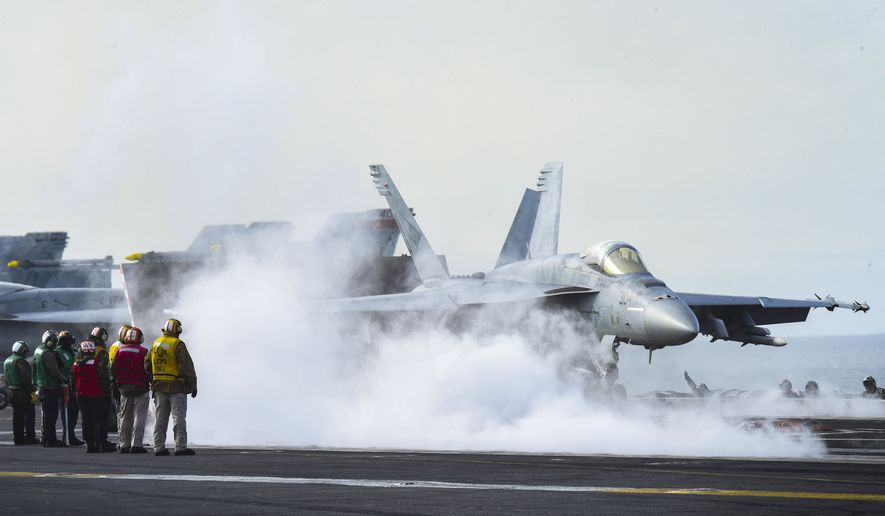The spread of the coronavirus is “ongoing and accelerating” aboard the USS Theodore Roosevelt and its captain is warning that dramatic action must be taken immediately to prevent scores of dead sailors.
In a Monday letter to Navy officials obtained by the San Francisco Chronicle, Capt. Brett E. Crozier said the 4,000 crew aboard the ship — which docked in Guam last week as COVID-19 began its spread — are in grave danger. He said the Roosevelt is unable to comply with social distancing and other federal guidelines due to the relatively small nature of the ship and the close quarters in which its sailors eat and sleep.
The exact amount of confirmed coronavirus cases aboard the ship is unclear but it’s been widely reported to number in the dozens. Capt. Crozier said that number will increase quickly unless the entire crew can be removed from the vessel and isolated.
“We are not at war, and therefore cannot allow a single sailor to perish as a result of this pandemic unnecessarily,” he wrote in the letter, which was first reported by the Chronicle Tuesday. “Based on current limitations … [the ship] has instituted limited measures to slow the spread of the disease. We have moved a small percentage of the crew off ship, increased the frequency of thorough cleaning and attempted some social distancing. The current strategy will only slow the spread. The current plan in execution on the [Theodore Roosevelt] will not achieve virus eradication on any timeline.”
Capt. Crozier then laid out the only two options he believes are available to the military.
The first course would be to “maximize warfighting readiness and capacity as quickly as possible. No timeline necessary. We go to war with the force we have and fight sick. We never achieve a COVID-free [ship]. There will be losses to the virus.”
The other choice, he said, is to “achieve a COVID-free TR. Requires strict adherence to CDC guidelines and a methodical approach to achieve a clean ship. This requires immediate and decisive action. It will take time and money.”
“As war as it not imminent, we recommend pursuing the peace time end state,” he added.
Securing quarantined housing for the 4,000 crew, he said, will be expensive and logistically challenging. But the alternative appears much worse.
“Sailors do not need to die,” he said. “If we do not act now, we are failing to properly take care of our most trusted asset — our sailors.”
Asked if the sailors should be allowed to leave the ship, President Trump said Tuesday, “I’m going to let the military make that decision.”
The plan for the USS Theodore Roosevelt is to leave a skeleton crew aboard the ship while the majority are taken off for testing and a quarantine period, said Adm. J.C. Aquilino, commander of the U.S. Pacific Fleet.
The massive warship is loaded with its entire complement of aircraft, including fighter jets and helicopters, along with weapons, explosives and fuel — not to mention, the pair of nuclear reactors that provide power.
“I have to protect that ship. I have to be able to run the reactors, fight the fires and do damage control,” Adm. Aquilino told reporters in a Tuesday telephone press conference. “We will have to leave some number of sailors,” aboard the USS Theodore Roosevelt.
The plan is to rotate the crew off the ship where they can be tested, go into a 14-day quarantine period, then return, Adm. Aquilino said.
He said none of the sailors on the USS Theodore Roosevelt have been hospitalized as a result of testing positive for the coronavirus.
“I have no sailors on ventilators. I have no sailors in critical condition. I have no sailors in an ICU status,” Adm. Aquilino said.
The mission now is to move most of the sailors off the ship then scrub it down during the testing and quarantine period. After that, a COVID-19 free crew can return to its duties, Adm. Aquilino said.
“That is the process and that is what we’re trying to do,” he said.
• Mike Glenn can be reached at mglenn@washingtontimes.com.
• Ben Wolfgang can be reached at bwolfgang@washingtontimes.com.




Please read our comment policy before commenting.